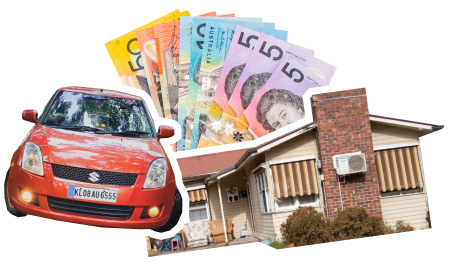Passing the drive test is the last step to getting your probationary licence. As part of the drive test you'll be taken for a short drive in varying traffic conditions by a driving instructor in order to test your driving skills in a real-world situation.
Based on VicRoads' drive test page, we've put together a list of ten essential things you should know in order to pass the test.
1. Know your dashboard
Before you even get on the road to take the drive test your instructor will ask you to show you know how to use things like indicators, hazard lights, windscreen wipers and de-misters. Put a little time aside to get to know exactly where they are and how they work.
2. How to start and stop your car
Plan your practise drives around different kinds of intersections (e.g. traffic lights, give way signs, stop signs) and different levels of traffic so you can develop the ability to promptly and confidently stop and start your car.
3. How to turn left and right at intersections
Plan to make at least one left-hand and one right-hand turn every time you go out for a practice drive.
4. How to change lanes
It's important to practise moving from one lane to another, both in quiet and busy traffic. Plan to change lanes at least once every driving session.
5. How to reverse park
Find a quiet street with parallel parking and spend some time reversing into parks, then pulling out and doing it again until you're confident you can get it right every time.
6. How to do three-point turns
Find a quiet spot (e.g. a car park, your driveway, a nearby court or cul-de-sac) to spend some time perfecting your ability to turn a car around in a tight spot.
7. How to drive in busy traffic
Make sure at least some of your practise driving sessions take place at busy times, like peak hour on a main road or freeway.
8. How to merge with other traffic
Head for a nearby freeway or main roads and spend some time exiting and entering to get a feel for merging with the flow of other traffic.
9. How to drive on straight and curved roads
For straight driving practise head to the freeway, the highway or the city centre. For curved roads head out to the countryside, the coast or the hills. Practise driving around roundabouts too.
10. Make sure everything works
If you're using your own car to sit the drive test, take a little time to check that everything on the dashboard works, and that your car is generally in good working order. If there's anything not working you won't be allowed to take the test.
More information
For more about the drive test, check out the VicRoads drive test page, or their drive test checklist.
For more about getting your Ps, including information about the Hazard Perception Test, check out our getting your Ps page. And for more about driving around on your Ps (now that you've aced the drive test), check out our driving on your Ps page.
Good luck!
Links
Vic Roads - licences
Links, tips, information and answers to questions on dozens of licence and driving related topics including fees, types of licences, getting your Ls and Ps.
Transport Accident Commission (TAC) - road safety
Information about the kind of driving practice you need, important safety rules and how to drive in different conditions.

